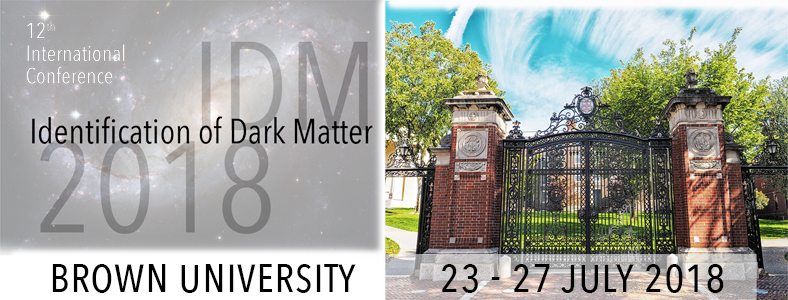Conveners
3.1 Plenary
- Neil Spooner (University of Sheffield)
The state of nuclear recoil calibrations in germanium and silicon at and below 500 eV and plans for SuperCDMS will be discussed. New calibrations, and novel methods of calibration, at the ultra-low thresholds acheivable by SuperCDMS are required. Traditional calibrations using the scattering of fast neutrons will be supplemented by calibrations studying the Thompson scattering of high-energy...
We have all heard of the cloud and bubble chambers of course, and the latter in the context of direct WIMP dark matter detection even. However, no one has explored a third phase transition, into solid, until now that is. This talk will introduce the snowball chamber, which utilizes a supercooled liquid, just purified water in the prototype. An incoming particle triggers nucleation in the...
LUX (Large Underground Xenon) is a retired, direct dark matter detection experiment that has published three, previously world leading limits on the spin-independent cross section for the Weakly Interacting Massive Particle (WIMP) nucleon scattering. The detector was dismantled in the Fall of 2016 and efforts were shifted to completing additional analyses with the existing WIMP-scattering and...
The China Dark Matter Experiment (CDEX) aims at direct searches of light Weakly Interacting Massive Particles (WIMPs) at the China Jinping Underground Laboratory (CJPL) with an overburden of about 2400m rock. Results from CDEX-1B and CDEX-10 phase, and related technical development are reported. In addition, the progress of CJPL-II extension project will be introduced.
Direct searches for dark matter candidates require deep underground research facilities and specialised low background infrastructure and associated capabilities. As the dark matter community develops ever more sensitive detectors, the requirements placed on deep underground facilities and these capabilities become even more stringent. This talk will review recent progress within deep...
The LSM is Located in the middle of the French/Italy “ Fréjus “ tunnel , below Fréjus peak mountain under 1700 m (4800 m.w.e) rock and it is a cozy place to look for rare process such as WIMP research or double beta decay detection.
The low radioactive environment of the LSM, characterize it as an exceptional place for experiments requiring low radioactivity conditions in Particle and...
